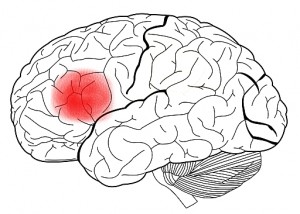by Jack El-Hai, Wonders & Marvels contributor
Every few months, the news media report on a strange malady: someone unexpectedly and unintentionally begins speaking in his or her native language with a foreign accent. This disorder occurs all over the globe; for instance, a Canadian acquires a Scottish accent, a Japanese develops a Korean accent, and an Indian speaks Hindi with a new American accent.
The problem is troubling and mysterious to its victims and their friends and families, but it almost always results from trauma to the brain. And the accents that victims suddenly acquire are not true foreign accents — patients rarely have any experience with or exposure to the foreign tongue that supposedly colors their speech — but represent speaking impairments that have appeared after damage to the central nervous system.
Foreign language syndrome first appeared in the medical literature in 1907 with French neurologist Pierre Marie’s description of a patient who began speaking French with an Alsatian accent after suffering a stroke. Twelve years later, neurologist Arnold Pick reported on a patient whose Czech language became flavored with a Polish accent after a stroke.
Over the years the reports continued to trickle in, including a heart-rending case from World War II. In 1941, during the German assault on Norway, a 30-year-old woman identified as Astrid L. was injured by an explosive shell. Left with a splintered skull and exposed brain, she eventually recovered except for the sudden appearance of a German-sounding lilt in her Norwegian speech. Astrid had never been to Germany or spent time with German speakers. But her countrymen assumed otherwise, and she was ostracized and sometimes refused service in shops.
Research by speech pathologists in the following decades uncovered fascinating information about foreign accent syndrome. Among native English speakers, the disorder affects their speech with German, Swedish, Norwegian, Spanish, Welsh, Italian, Irish, and New England overtones, among others. This YouTube video shows a speaker of Midwestern American English who began talking in British English after a stroke.
More than half of patients develop the syndrome after strokes, and others show their accents after head trauma and seizures. Most patients exhibit more common speech disorders such as apraxia and dysarthria in addition to their perceived accent. Prolongations in the pronunciation of vowels, slightly incorrect consonant sounds, the addition of vowel sounds between words, and the placement of unnatural syllabic stresses contribute to the illusion of a foreign accent. Often the appearance of the syndrome is connected with damage to the region of the brain known as Broca’s area. Treatment by a speech pathologist can improve the condition.
The next time you read a news account of someone’s sudden and involuntary use of a foreign accent, remember that neurologists and speech pathologists have long known the causes of this odd disorder, and that there’s nothing supernatural about it.
Further reading:
Aronson, Arnold E. and Bless, Diane M. Clinical Voice Disorders. Thieme, New York, 2009.
Gurd, J.M., Coleman, J.S., Costello, A., and Marshall, J.C. “Organic or Functional? A New Case of Foreign Accent Syndrome.” Cortex 37, 715-718. (2001)
Kurowski, K.M., Blumstein, S.E., Alexander, M. “The Foreign Accent Syndrome: A Reconsideration.” Brain and Language 54, 1-25. (1996)

